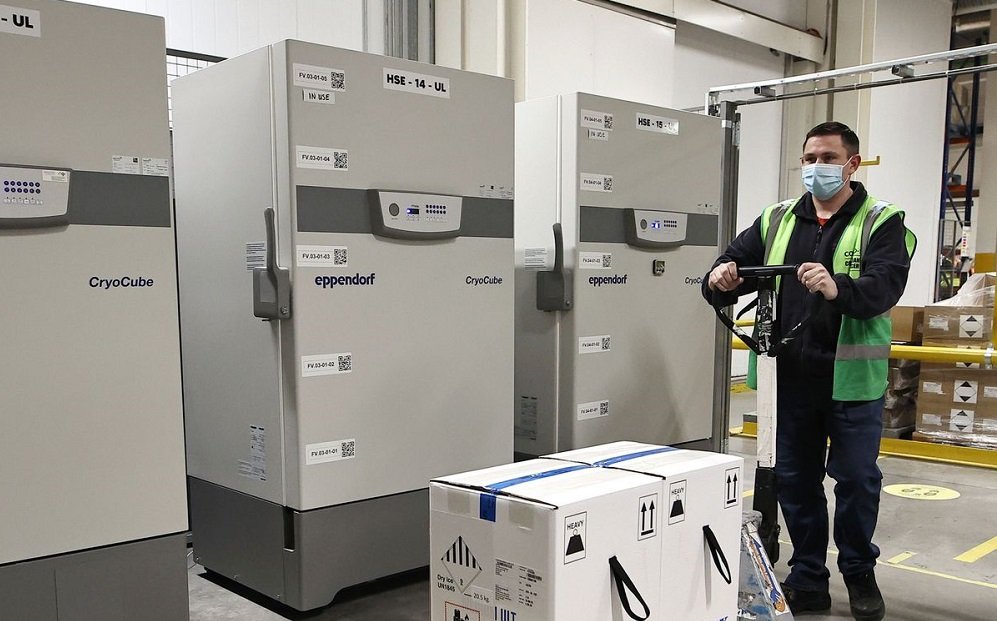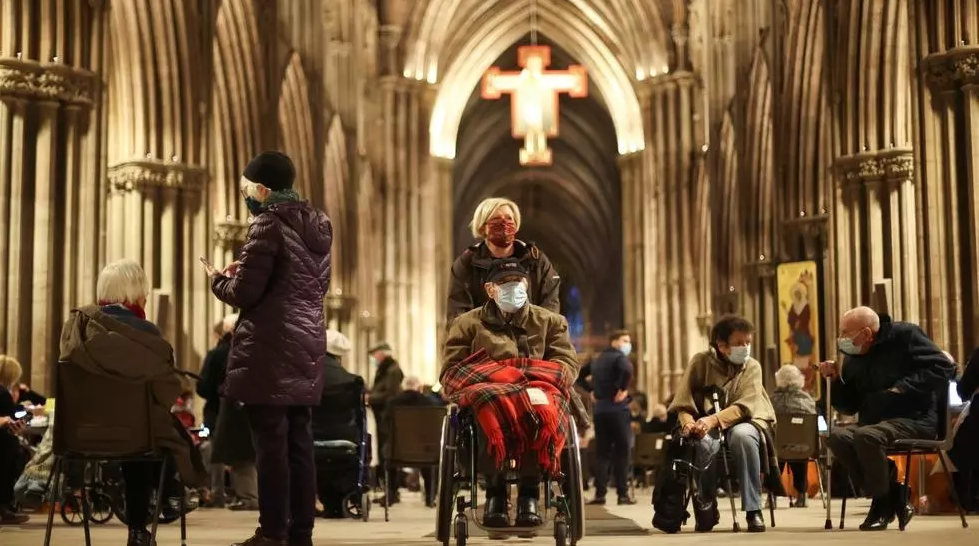Rewind to last October. The Government, on the second attempt, establishes a taskforce to lead the national vaccine rollout. Up to then, two vaccine groups had existed: one in the Department of Health, the other in the HSE. Not exactly an encouraging start.
But the relentlessness of a political and media cycle that thinks in seconds and minutes rather than weeks and months had made me weary of negativity. So, I decided to switch the right side of my brain to ‘productive pandemic mode’ and give the vaccine rollout strategy a chance.
The devastating effects of Covid make the vaccine programme the single most important service the state will likely ever be responsible for delivering. If this war is to end, vaccination is the gateway to peace. However, it was Aristotle who said that it is more difficult to organise the peace than to win a war, and so it is proving with the vaccine rollout.
The task of vaccinating the entire adult population is daunting yet exhilarating. It is hard to think of another task that comes even close in terms of importance. It’s the kind of challenge where the best leaders come into their own.
It was clear late last year that strategic communications would be central to the success of the vaccination programme itself, as well as providing hope in the wider battle against the virus. A good start would be essential. You only get one chance to make a first impression, and an informed public was acutely attuned to the task at hand.
Exhausted and bereft
I watched, waited, and soon worried. It instantly became apparent that strategic communications was not at the top table in the pivotal formulation stage. Three elements in particular pointed to this.
First, its make-up. Of the taskforce’s 14 members, 13 are from the public sector. No communications experts were appointed (though one, among the most overworked people in the country then and since, would subsequently ‘attend’ taskforce meetings). It was notable, too, that it included key people who had for months been responsible for managing and communicating the crisis. For something as important and demanding as the vaccine rollout, it is ill-judged to expect the same people to continue to go to bat on the solution too—they’re exhausted.
So, too, were others. Media, understandably, were by then on autopilot, bereft of the adrenaline that sustained them in the first half of the crisis. They were scrambling for fresh faces, voices, and perspectives because the public who consume their journalism were becoming disinterested. Like it or not, people start to zone out from even the most effective communicators when they get too much of them, particularly on a topic as energy draining as Covid.

The second reason for worry was the silence. For weeks, we heard very little about what was going on with vaccine rollout planning. The taskforce’s first meeting was 25 November. Media treatment of the story remained secondary to the daily rollercoaster of the virus itself. Glimpses of vaccine thinking and planning emerged only sporadically. Nothing proactive of meaning was done to change this dynamic.
When we had communication, it was reactive and flat, as illustrated by the rushed publication of the vaccine priority list and the infamous ‘men in yellow jackets’ image when the first doses arrived. Pictures of 79-year-old Annie getting the country’s first jab, while heart-warming, do not on their own represent strategic communications.
Third, and most damaging of all, was the tone. The messaging was cumbersome, languid, and preachy. In effect, we were told we would know what we need to know when we need to know it. Media interviews, when they did happen, felt like an intrusion on a conversation between healthcare professionals.
The communicators repeatedly turned opportunities to energise and reassure into moments of confusion and angst. I grimaced when I heard one senior vaccine spokesperson in the early days of January use the bulk of a keynote interview to talk about the link between vaccination and anaphylaxis, the likelihood of which is one in 1,000,000 vaccinations. Listeners tuning in in hope instead heard fear.
Meanwhile, the repeated caginess of government members on the rollout was notable, as was the willingness to leave it all to the Minister for Health. It was as if they didn’t trust themselves.
The four corner pieces
A successful vaccination programme is the ultimate jigsaw. Vaccine supply is one of the four corner pieces, the others being vaccinators, technology, and logistics. But it appeared those in charge treated supply as the only piece that mattered.
Yes, supply matters. Yes, we are at the mercy of manufacturers. Yes, we paid a heavy price for putting uncommercial people in charge of the negotiations. But supply became the default shoulder shrug. As a result, it began to sound like an excuse.
Into this information vacuum stepped the media, doing what the media always do: reporting the information that government either could not, would not, or never thought of communicating. Day after day, unofficial details of the vaccine rollout plan appeared prominently in news reports. The initial delay in nursing home deployment, county-by-county details for when each nursing home resident would be vaccinated, the location of vaccine centres, the mass vaccination of doctors, the recruitment of vaccinators—the status of these and other vital parts of the jigsaw were the subject of multiple unofficial reports. By the time such details were officially confirmed or explained, people had already moved on. With that, the programme’s impact diluted.

Fast forward to the present. The public, ruefully reflecting on a meaningful Christmas, continues to be greeted with news of the UK’s vaccine rollout, detailing dates, times, locations, numbers, infographics, videos, and more—in short, a palpable sense of momentum.
While much can be laid at the door of the UK government on its handling of this war, its early moves to deliver the peace are clearly paying off, with a firm date, 21 June, now signalled for an end to restrictions. Some will say dates quickly become a hostage to fortune, but they bring focus and results too.
Goodwill reserves in the red
The contrast in mindsets either side of the Irish Sea could not be greater. Here, fear is suffocating hope. The enormity of the crisis itself stifled strategic consideration of how best to deliver the peace. Even when things could still have been salvaged in January, the fallout of Christmas meant the courage to choose hope over fear was in short supply.
And now, with goodwill reserves in the red and creeping hostility in the air, we’re told that the vaccine programme ‘will completely change the landscape and transform the options available to us as a society for reopening and renewing our country’.
We also finally got an indicative timeline for when people might be vaccinated. Yet the pathway document rather clunkily talked about how, despite vaccines, there remain real risks that this winter may be like the last. Twenty-four hours later, Nphet suggested that normal life is ‘some way off’ and that we should not expect vaccines or even herd immunity to halt the virus. The day after, they said we’d be close to normal by the end of this year. Confused?
While there is never a wrong time to do the right thing, this week’s newfound vaccine bullishness has been undermined by the failings that were apparent from as far back as last summer. Vaccine communications have been behind the curve from the off. We failed to put strategic communications at the top table on day one. Now, gripped by fear, we are paying the price.

About the author
Dan founded 360 to deliver intelligent communications as a service. Since 2011, he has cultivated a team of almost 30 professionals who share his vision, ethos, and passion for redefining and reshaping PR. Dan works in close partnership with some of Ireland and Europe’s leading CEOs and senior executives to build their organisations’ communications cultures and equip them with the tools to succeed in fast-changing political, commercial, and social landscapes.
Cover photo credit: Dara Mac Donaill
